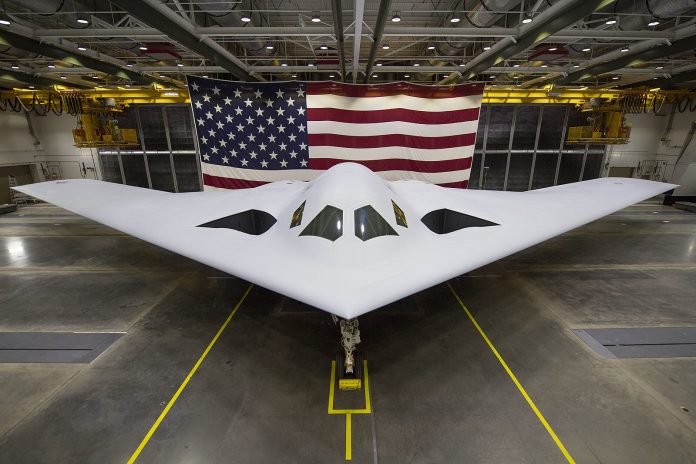
The B-21 Raider, a technologically advanced marvel, is making steady strides in flight testing as it gears up to fortify the United States Air Force’s bomber fleet. This futuristic stealth bomber, a symbol of American air power, is shaping to be the linchpin in national defense for decades to come.

Since the B-21 Raider’s grand revelation on December 2, 2022, it has been under rigorous flight testing at Edwards Air Force Base.

During a recent Senate Armed Services Committee testimony on May 8, 2024, Andrew Hunter, the Air Force Assistant Secretary for Acquisition, Technology, and Logistics, affirmed the program’s robust progress. “We are in the flight test program, the flight test program is proceeding well,” Hunter clarified.

Northrop Grumman, the manufacturer, has designed the B-21 with a digital-first approach, embracing modern agile software development, advanced manufacturing techniques, and digital engineering tools.

This ‘digital bomber’ ensures that the B-21 is not only cutting-edge today but adaptable to the inevitable advancements of tomorrow’s battlefields.

The B-21 is the epitome of a sixth-generation aircraft, reflecting over three decades of stealth and strike technology evolution. It emerges as the next step in the Air Force’s strategic bomber lineage, developed with advanced networking capabilities and an open systems architecture, optimizing it for the high-end threat environment.

This enables the B-21 to continually adapt to evolving threats through rapid upgrades rather than traditional block upgrades, keeping it a step ahead at all times.

The aircraft’s mission is clear — to penetrate the toughest defenses worldwide for precision strikes, demonstrating America’s resolve with long-range, high survivability, and mission payload flexibility.

It is pivotal for the nation’s strategic deterrence strategy, with the capacity to deliver both conventional and nuclear payloads. An impressive wingspan of approximately 140 feet, albeit smaller than the B-2’s 172 feet, does not detract from its intended dominance in the skies.

One of the B-21’s most significant features is its open systems architecture, which allows for the seamless integration of new technology, capabilities, and weapons through agile software updates and built-in hardware flexibility.

This ensures that the B-21 Raider can meet the evolving threats head-on for decades to come, without the need for time-consuming and expensive block upgrades.

The Raider’s production process is just as innovative as its capabilities. The Air Force Rapid Capabilities Office manages the acquisition program with a forward-thinking strategy — build test aircraft as production-representative as possible. This means that the same manufacturing line, manning, and tooling used for the test aircraft will be employed for the production ones, streamlining the transition from testing to service.

When it enters service in the mid-2020s, Ellsworth Air Force Base in South Dakota will be the proud first main operating base for the B-21, with Whiteman AFB in Missouri and Dyess AFB in Texas following suit.

The production goal stands at a minimum of 100 aircraft, gradually replacing the aging B-1 and B-2 bombers.

The B-21’s name holds historical significance, honoring the Doolittle Raid of World War II, a mission that transformed the course of the conflict in the Pacific theater.

